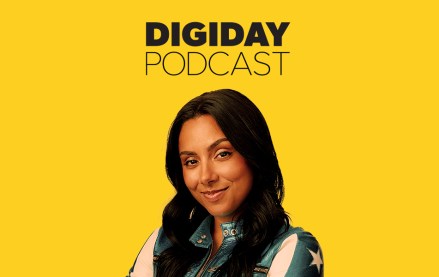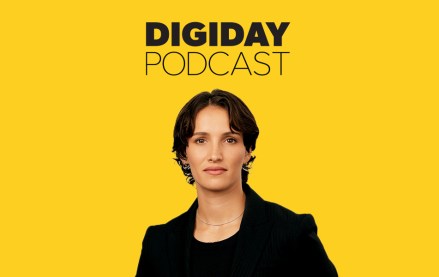How one content creator thrives on X, despite Elon Musk’s shakeup

This article is part of a special Digiday Podcast series that covers how content creators are building their brands and earning revenue from various major social media platforms. More from the series →
Subscribe: Apple Podcasts • Spotify
As a platform, X (formerly Twitter) has seen better days. After Elon Musk took over back in 2022, the platform has fallen from grace with advertisers and creators alike, due to the reinstatement of previously banned accounts, an increase in bots and simultaneous decrease in brand safety. However, X hasn’t managed to scare away everyone.
In fact, Jessica Davis, a part-time creator who focuses on career content, has managed to build out a following of more than 40,000 people since starting her account in 2021. Since then, she’s been able to convince subscribers and brands to shell out for her tweets, pulling in revenue from monthly subscriptions and funds from the platform’s ad revenue sharing program, which launched last summer.
In the first episode of the Digiday Podcast’s Creators series, Davis talks about being a text-based content creator in the short-form video era, navigating brand safety on X and the future of content creation in the ever changing landscape of social media.
Here are a few highlights from the conversation, which have been lightly edited for length and clarity.
Making money as an X creator
I would say if you are looking to quit your 9-to-5 and make a career off of being an X content creator, don’t. It is enough to pay a few bills here and there. I do have a solid subscriber base that come back month after month. But as far as the ad share, there is really a lack of transparency there. So while you can expect a consistent payout from the subscriptions, when it comes to the ad share, it’s really hit or miss. A few times I’ve gotten anywhere from like $300 to $400. Sometimes it’s $50. Sometimes it’s $20. There’s literally no transparency with how it is monetarily distributed. So I would say if you are going to maybe focus on creating content on X — because they do have some great features. They have the Twitter Spaces, they have the video spaces, the lives that you can do now and then of course, everybody loves threads — but you would really have to devote more of your time and attention, I would say, into just creating a core group of people that will continue to support you. Because the other side of that is very hit or miss and they’re still working on finalizing the kinks towards that.
Competing as a text-based creator amid the short-form video boom
As far as creating , it takes me a little bit longer because I get all of my thoughts in writing, in black and white. So it’s easier for me to take something that I’ve written and convert it into a clip or a Reel or into a video than it is to do [the other way around]. I have some friends that are creators as well. They’ll start off just doing a YouTube video and then they’ll just take chunks of that and make it into a thread [on X] or an Instagram post. But for me, it’s always been quite the opposite. I have a newsletter on LinkedIn as well. I write articles and threads on [X]. [Text-based social media] is not going away [for] as much as Twitter or X gets a lot of heat. People love the fact that you can just be sitting in your living room with a cup of coffee and write a thread. And next thing you know, it reaches millions of people. I think it’s the low barrier to entry that makes it really cohesive for a lot of people and why it’s still around.
Advertiser interest in X content
Yes, I would say definitely more niche based, more industry based. Like I said, I’ve worked with some SaaS companies. I’ve worked with some tech companies that will leverage my audience to talk about a program that they’re launching or to talk about a new feature that they’re launching on their app. I will say anytime I tweet, it could be anything like 10,000 people are going to see it. So there is some value in that. It’s not like YouTube, where they have over 2 billion people on their platform. But there are some accounts that you see on the timeline that you know that they might be saying something that I might find value in, so I’ll go check it out. I definitely have that type of audience. If I say something, they’re going to check it out. Some of the brands I’ve worked with find value in that.
The elephant in the room: Brand safety
I am very strategic with what I say, what I engage with. I even have gone as far as to arrange my settings in a way where if it’s something that could be triggering or something that could cause any type of feud or friction, I don’t even see it. I can’t even click it. It is a barrier that I put in place to protect myself because that also impacts your account on the platform as well. If you are someone that is constantly engaging with accounts that are causing trouble, you get flagged too. There is this unspoken rule of certain words. You can’t say certain things. Because as soon as you do it, all of a sudden, no one knew that you weren’t supposed to say it, but you’re getting flagged and now your account is gone. I really try to be very strategic with how I engage on the platform just so that if a brand or an organization does approach me and wants to work with me that they feel comfortable doing so.
More in Podcasts

Michelle Khare on building Emmy-worthy content — one challenge at a time
Michelle Khare’s not just taking on wild YouTube challenges — she’s eyeing an Emmy while she’s at it. Tune in for a peek behind the curtain at how she’s leveling up creator content.

How TikTok’s ‘The Secret Lives of Mormon Wives’ landed on Hulu, with Select Management Group’s Danielle Pistotnik
The talent manager and executive producer of “The Secret Lives of Mormon Wives” joined the Digiday Podcast to break down the process of the reality show finding a home on Hulu.

Digiday Podcast at Cannes: Former Bachelorette Rachel Lindsay makes the case for creators
Between panels and parties, creators are looking to get face time with ad execs, brand marketers and partners like Spotify. However, rather than coming to the Croisette to strike deals, they’re playing a long game.







